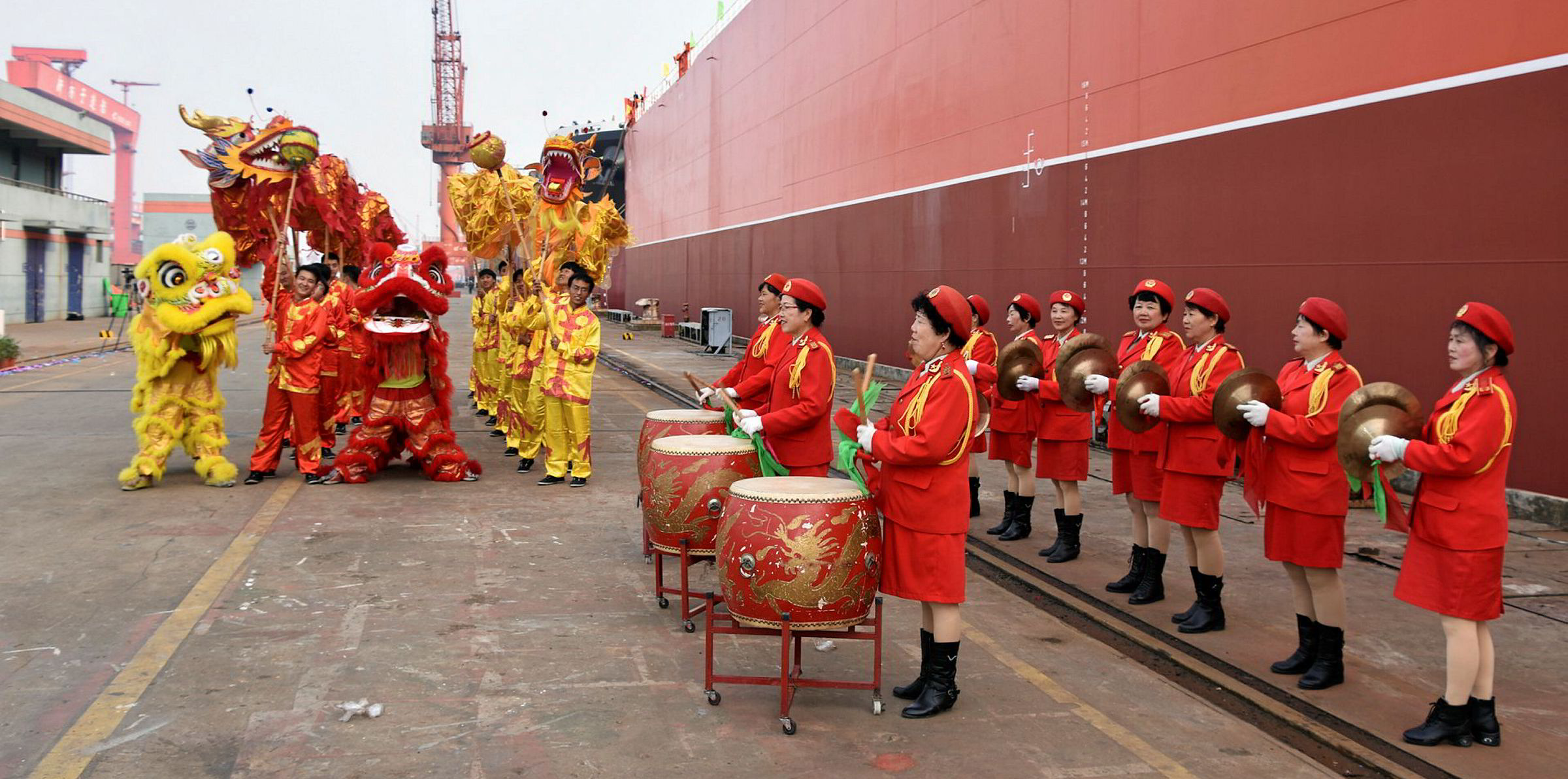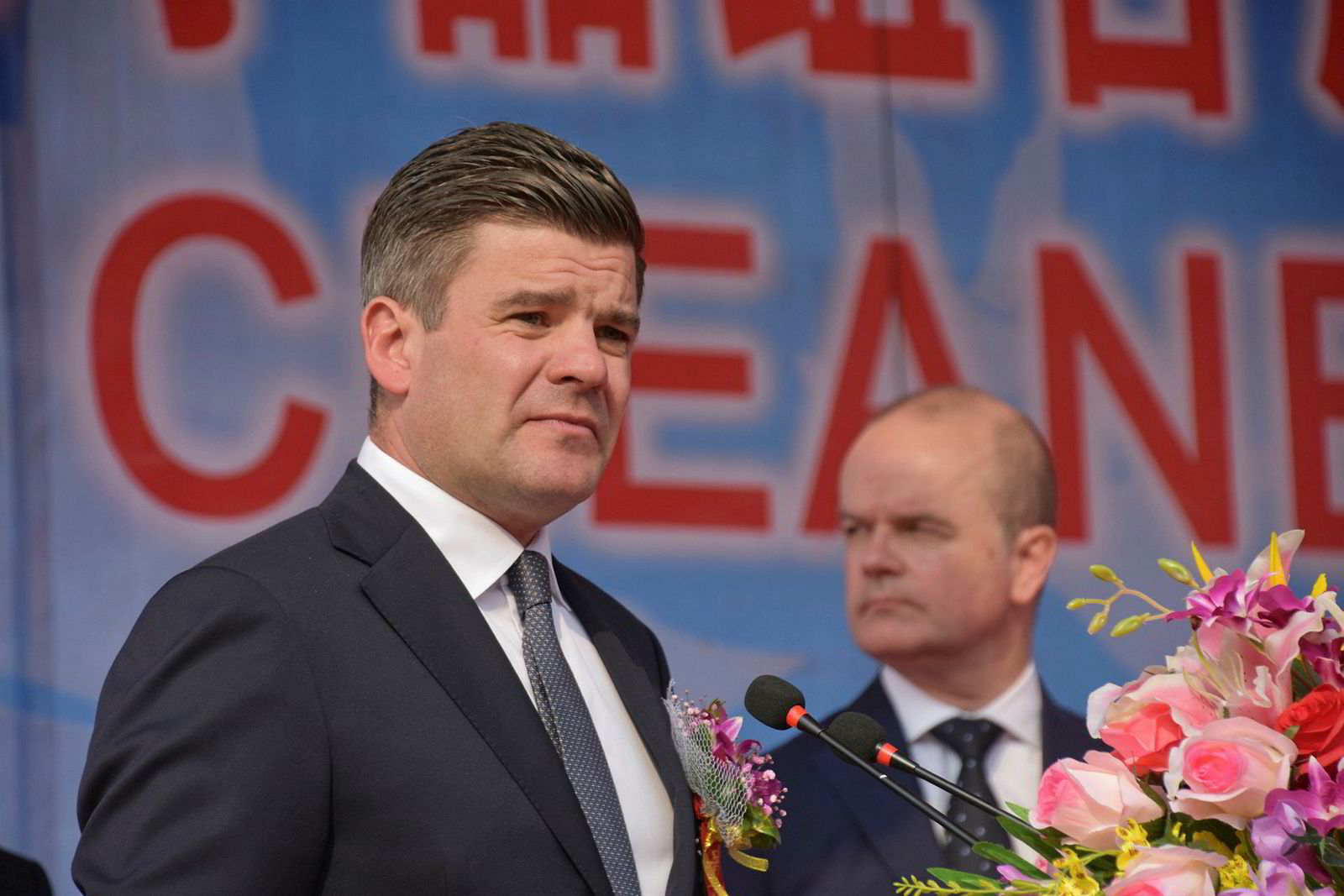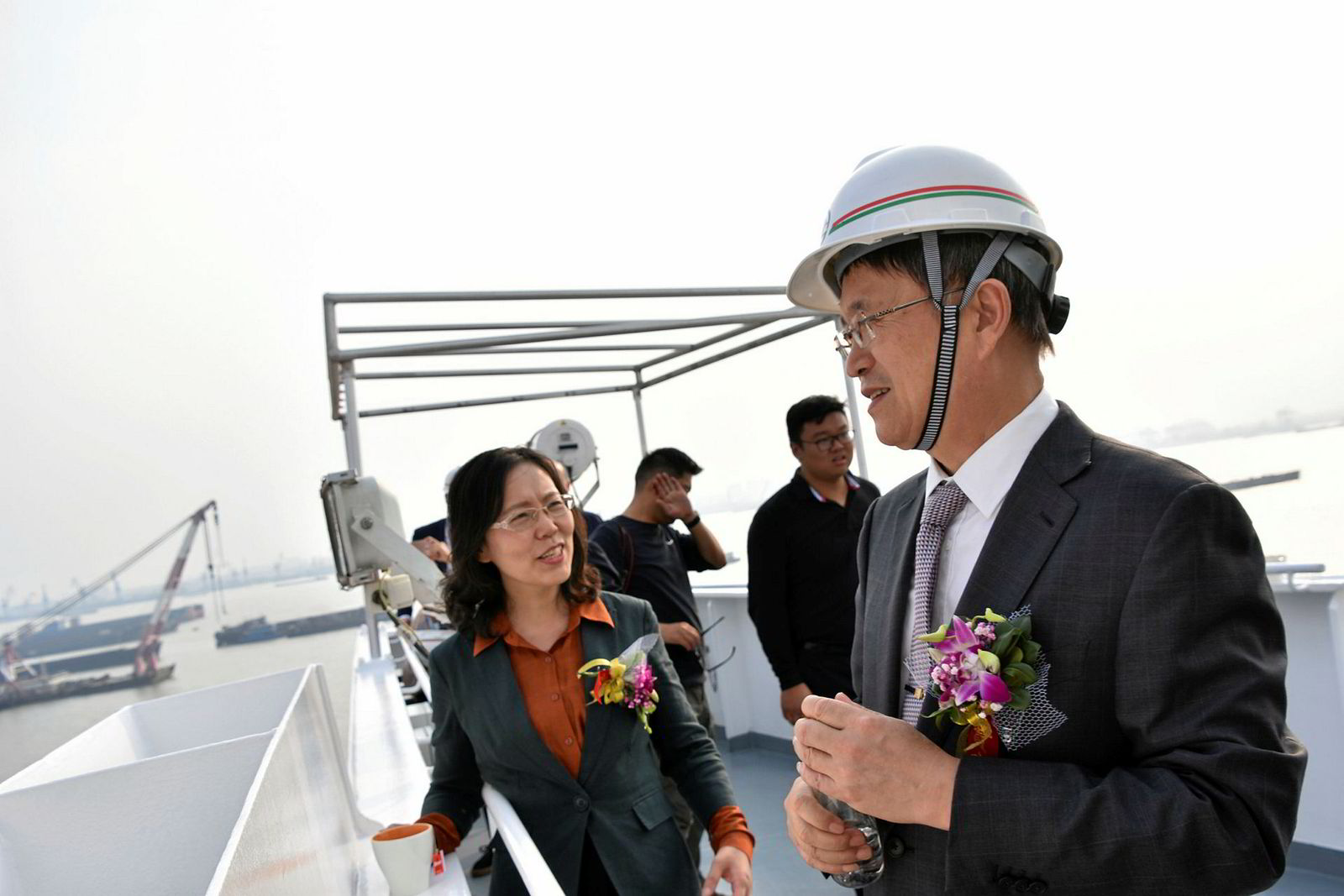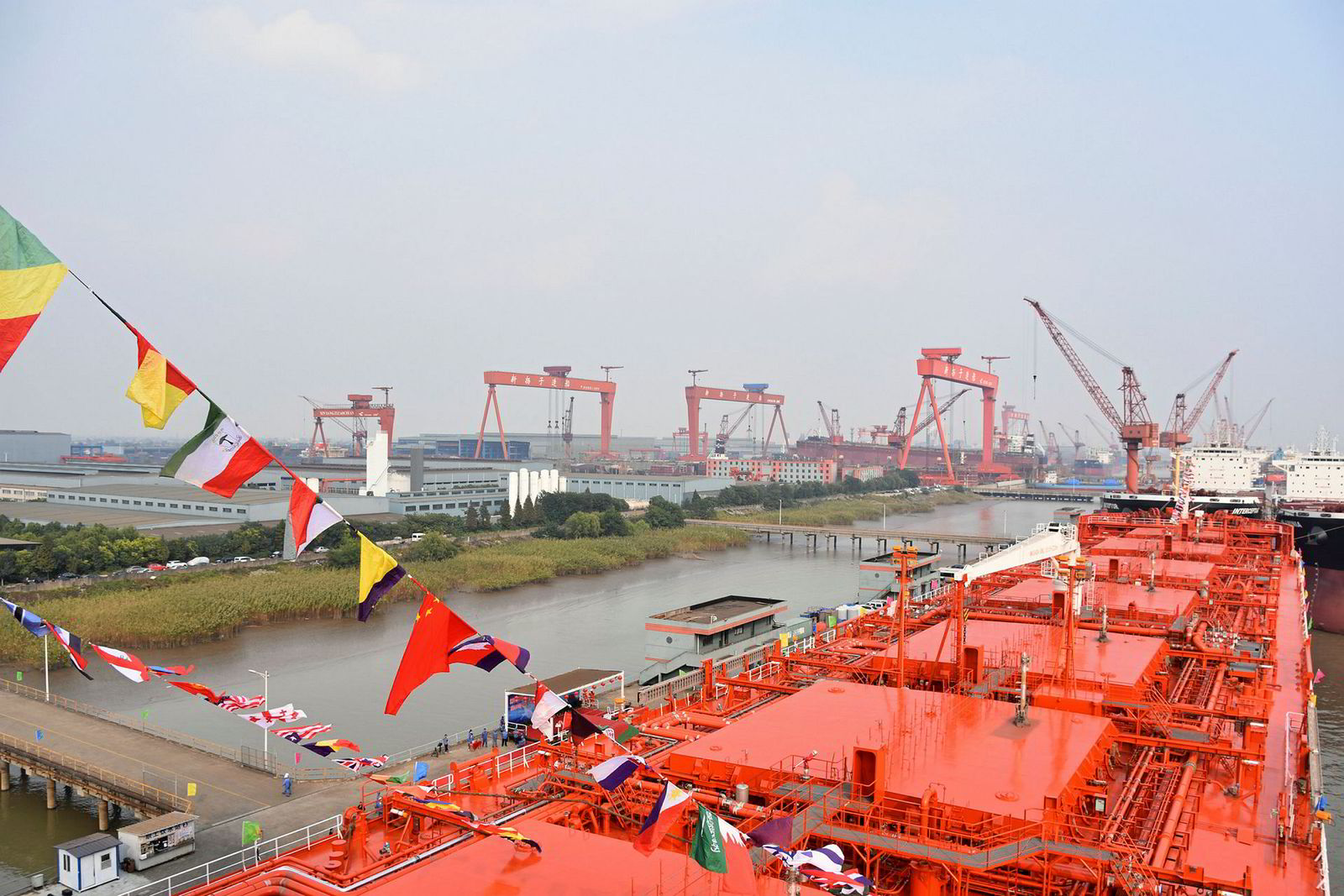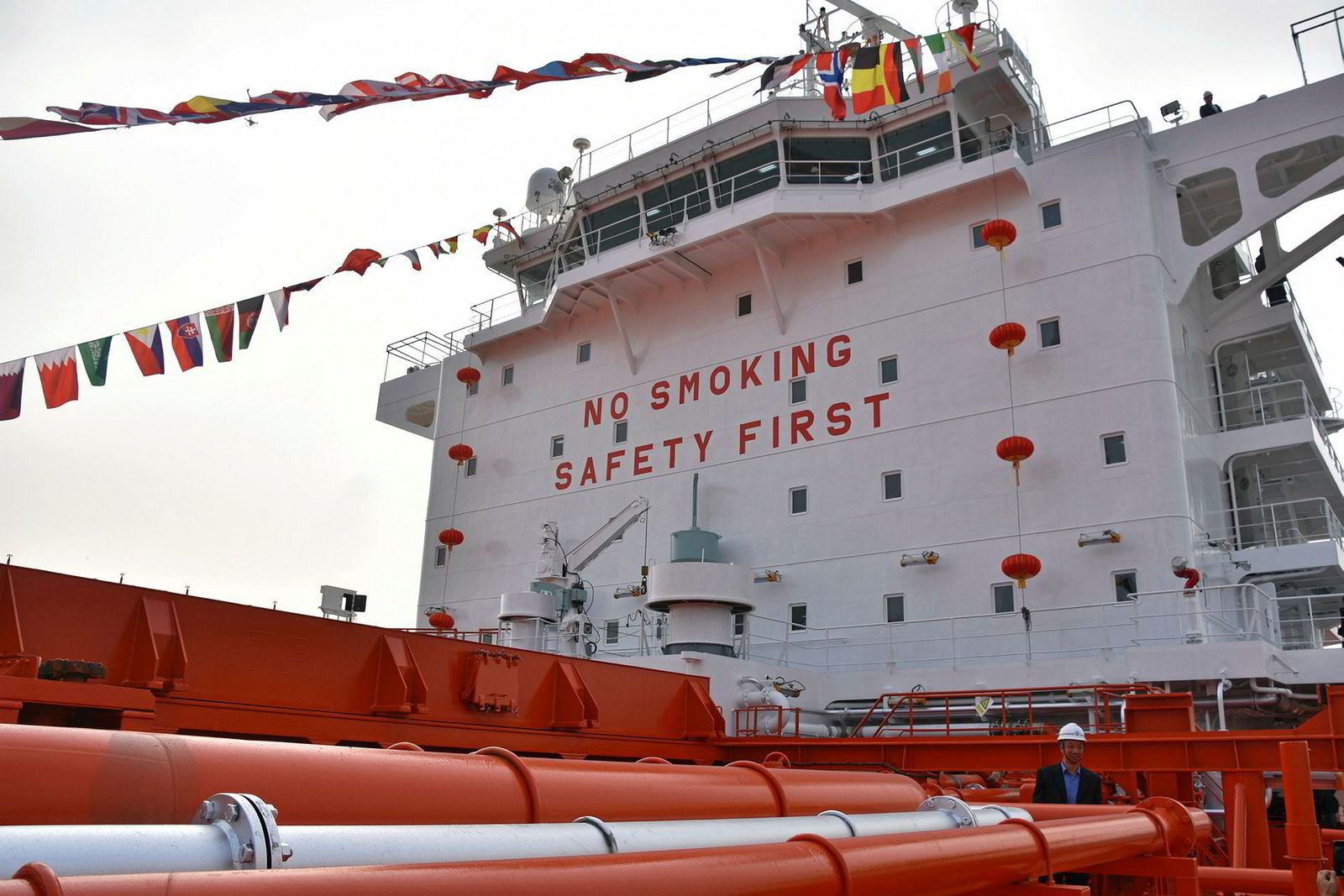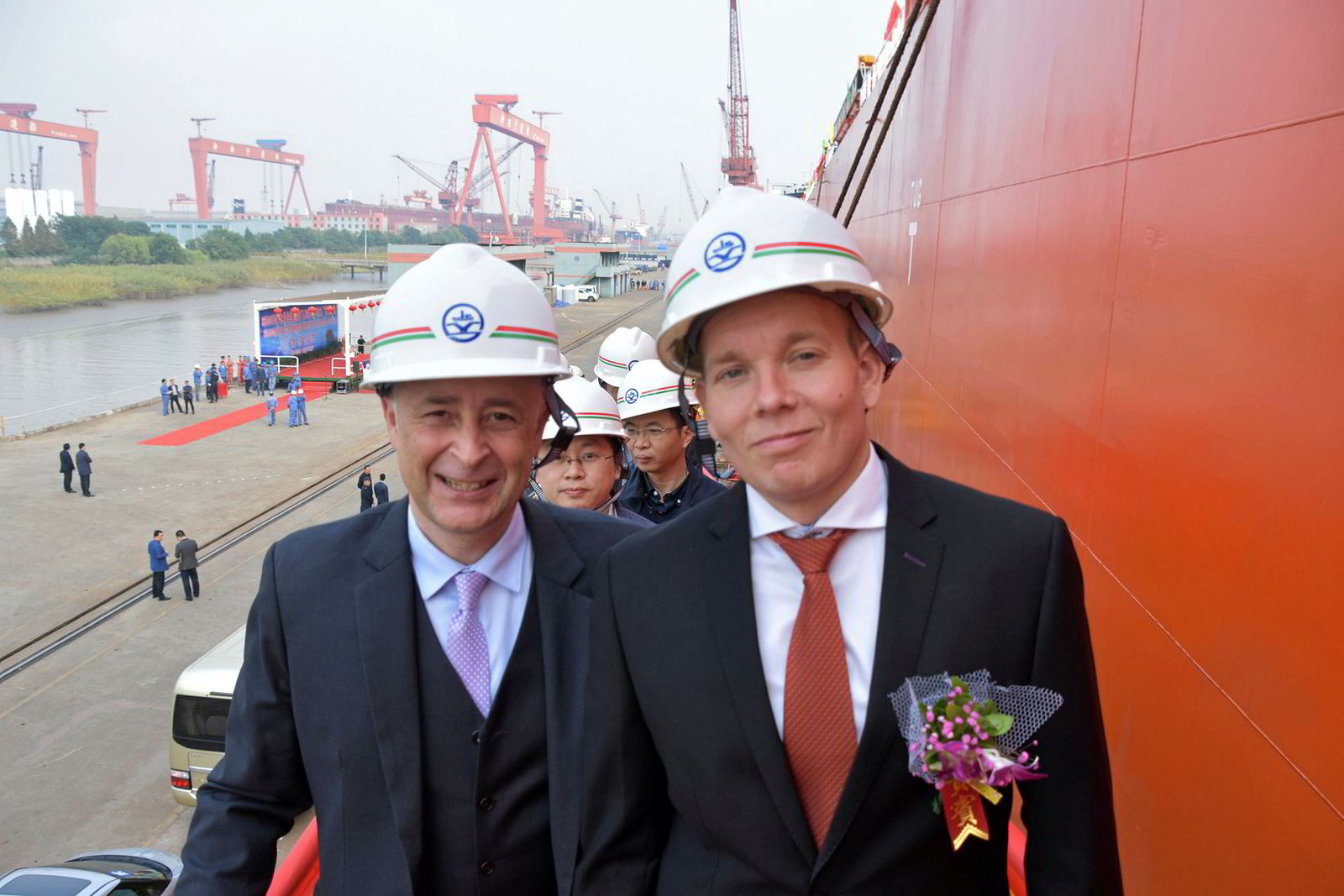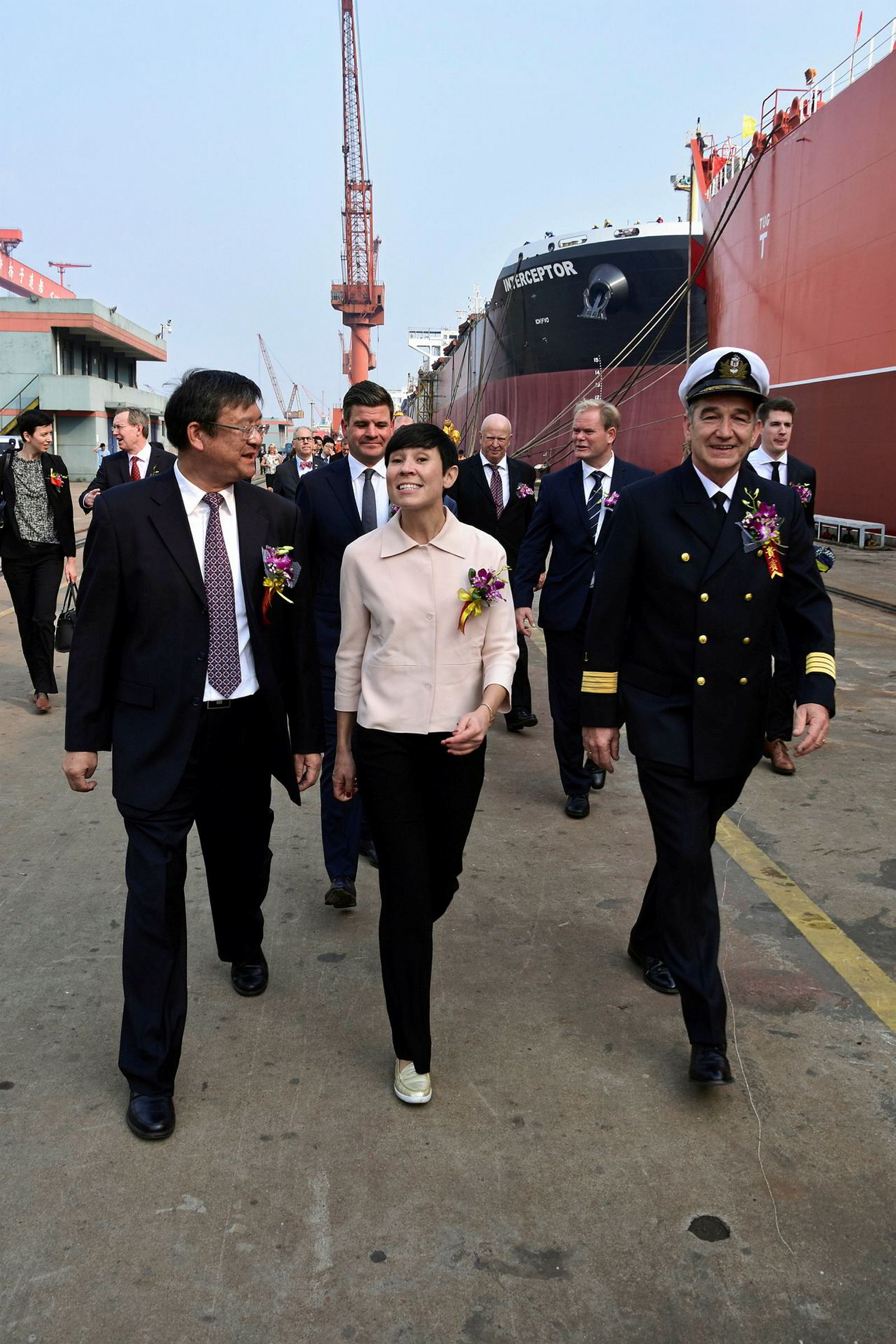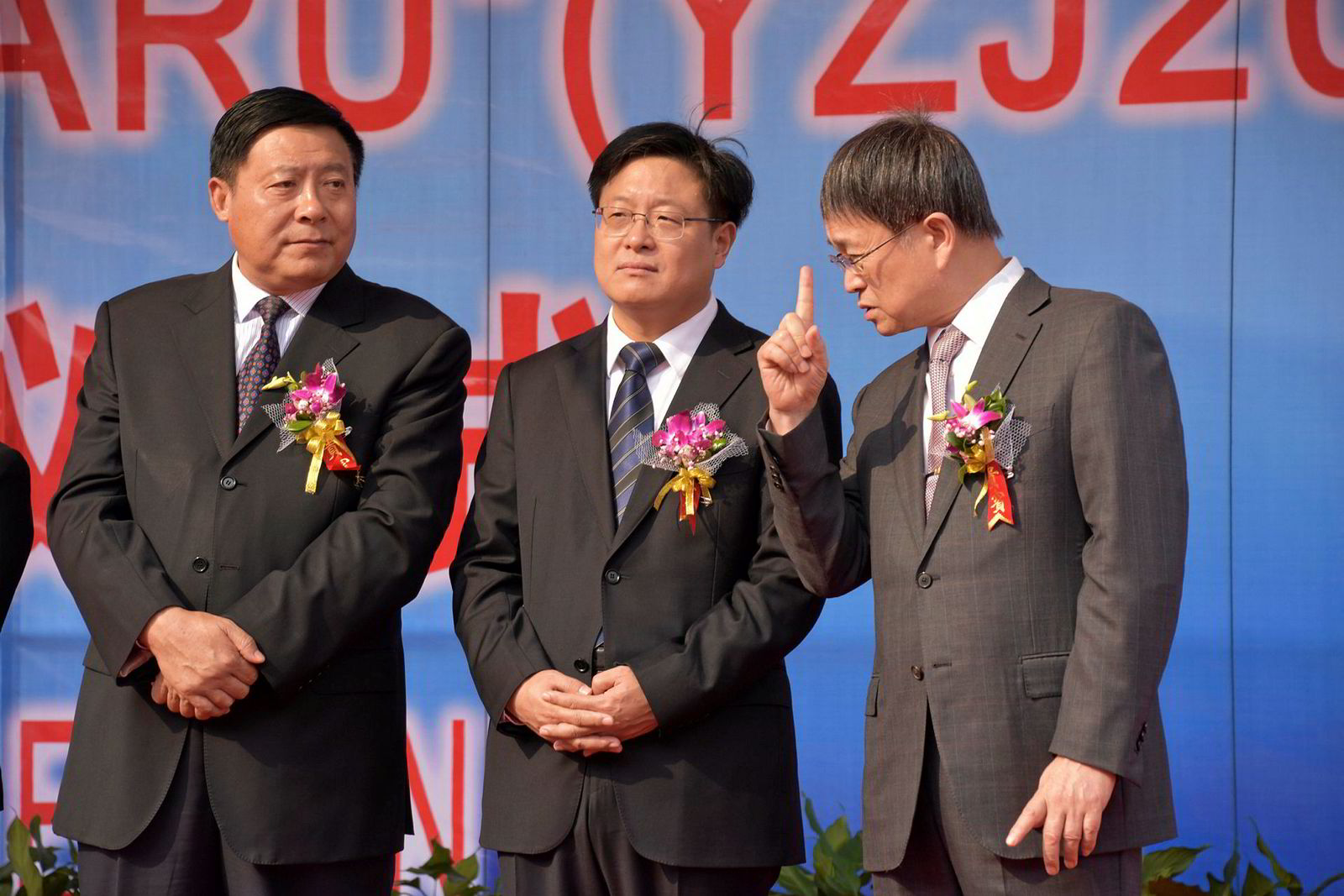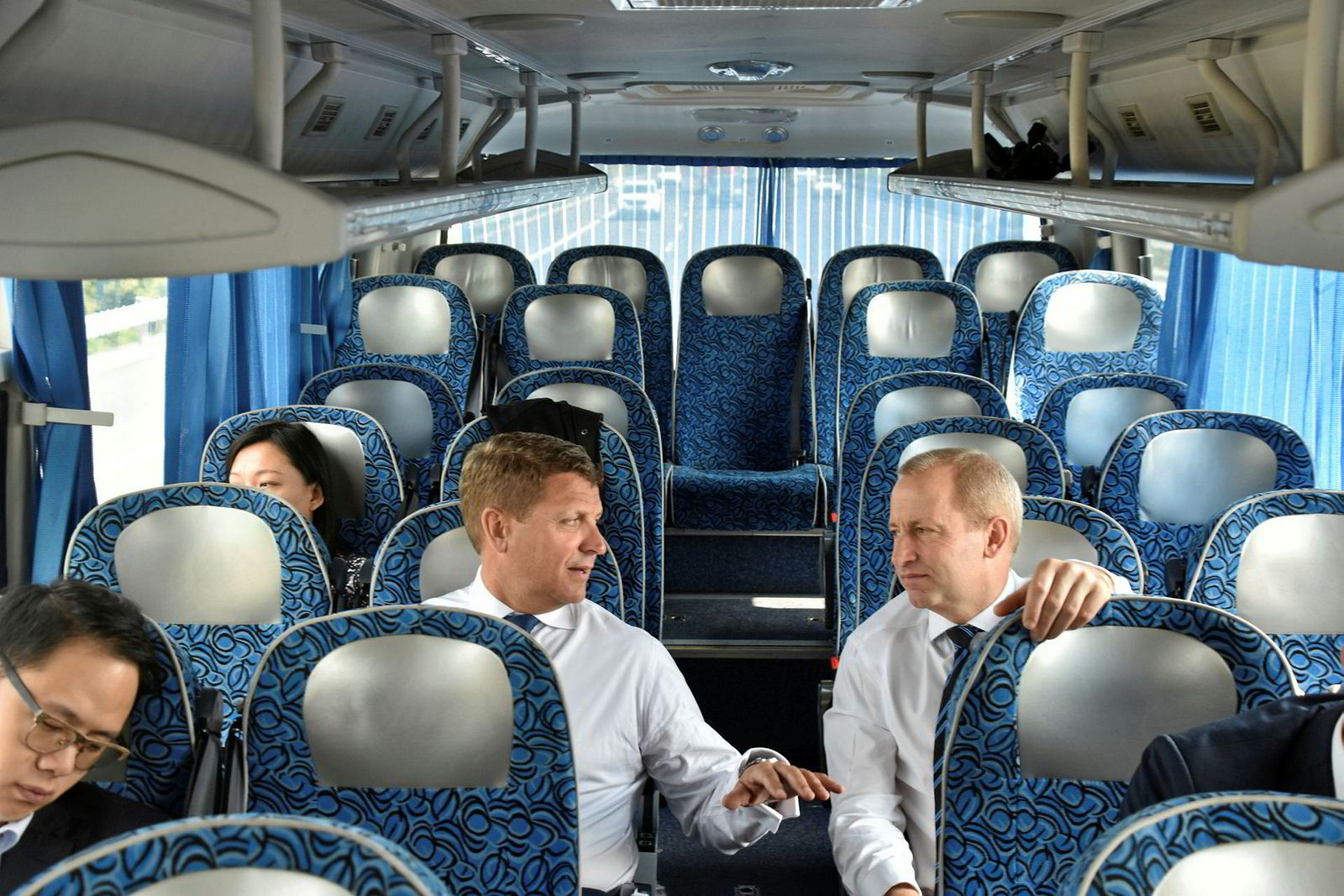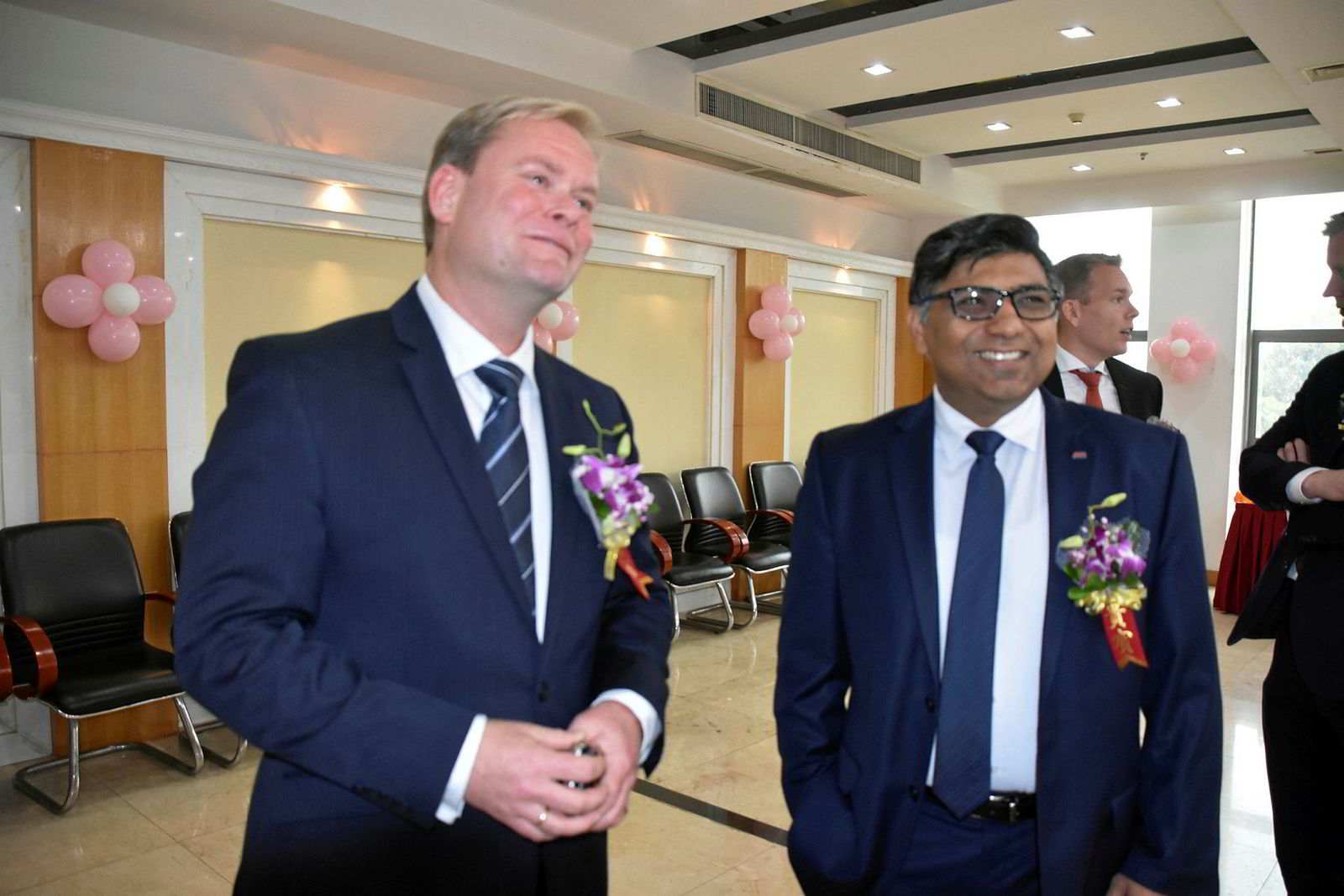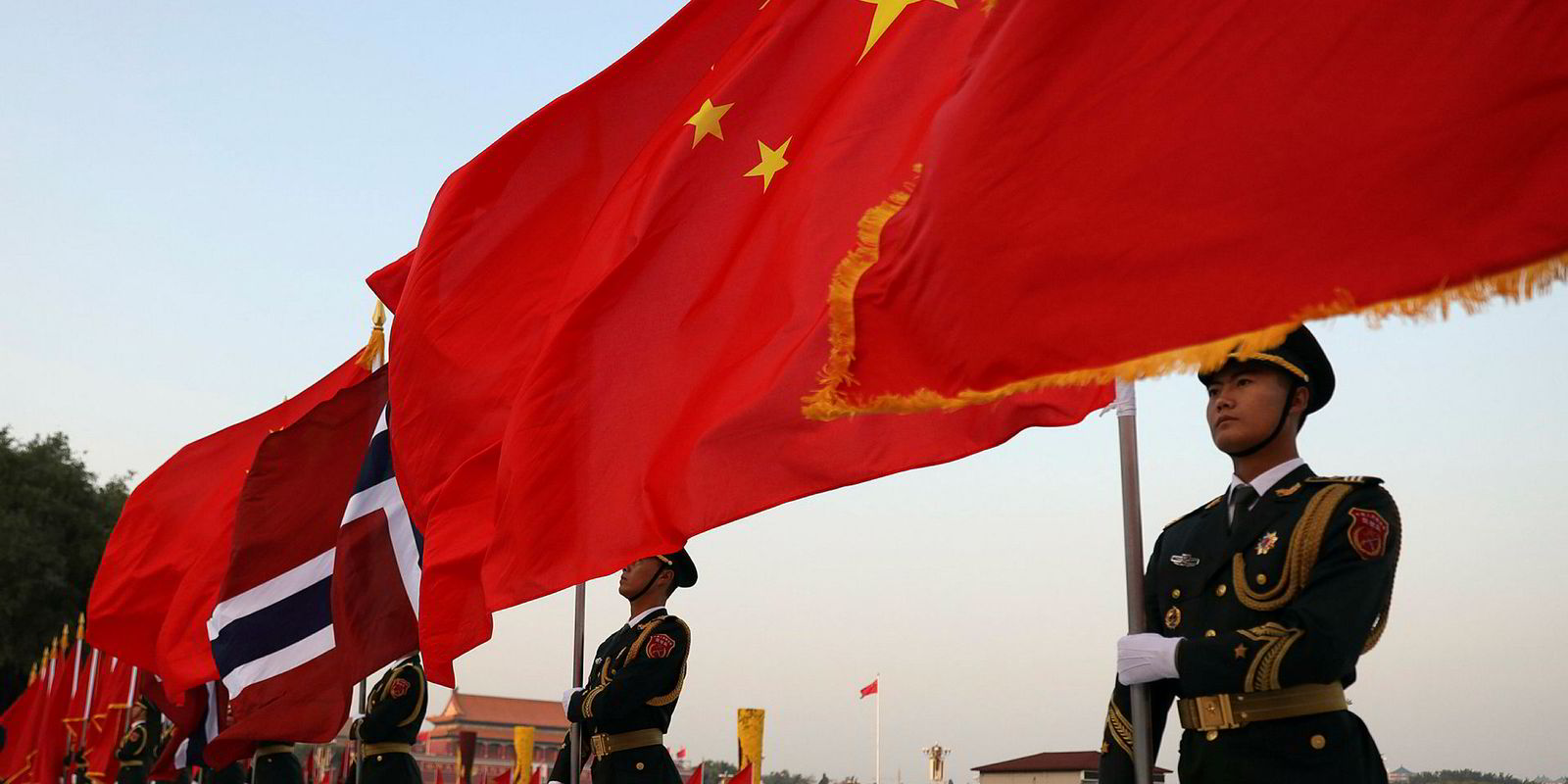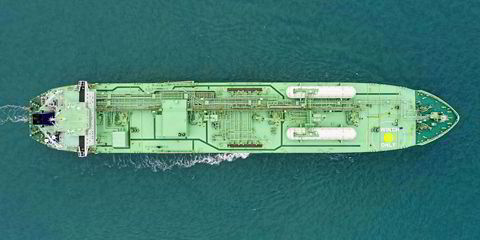Klaveness Combination Carriers (KCC) took delivery of the first of up to nine ships in a newly designed combination carrier series that will see the Torvald Klaveness group move into clean products shipping in a big way.
Torvald Klaveness veteran Audun Eriksen, the designer of the new Cleanbu ship series, was on hand from Norway to see the 83,500-dwt Baru (built 2018) receive its name. Also present was Engebret Dahm, managing director of Oslo stocklisting project KCC. So, too, were Torvald Klaveness chief executive Lasse Kristoffersen and EGD Shipholding Magne Ovreas — the bosses of KCC’s two main shareholders.
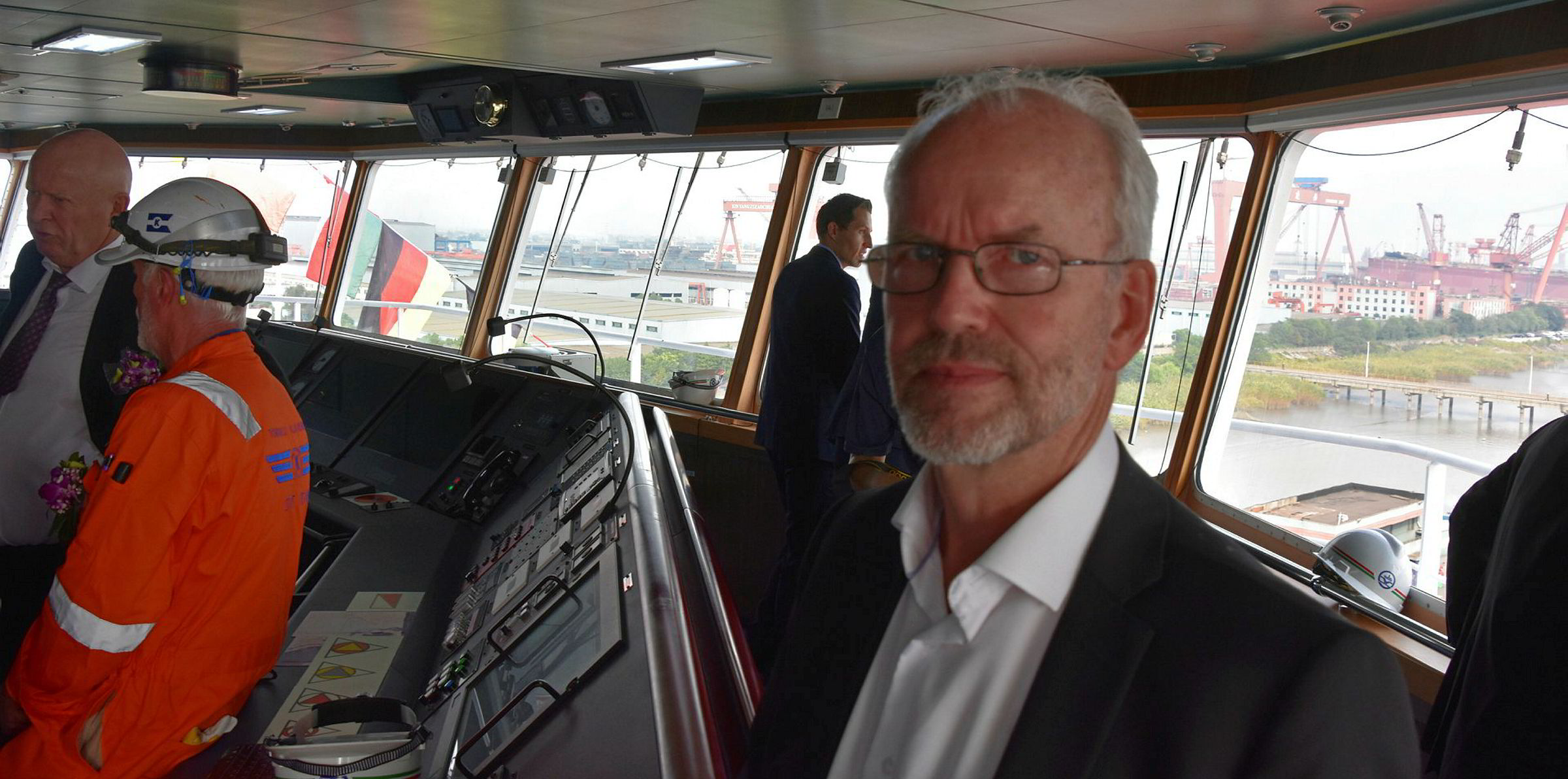
The order from Ren Yuanlin’s Yangzijiang Shipbuilding Group originally was for three firm ships with options. But the total number of firm vessels is now up to five, and four options remain to be exercised quarterly.
A recent private placement by KCC included funds for the equity piece of the sixth option, so it is expected to be declared. Ships in the series are being 60% mortgage financed by various combinations of Nordic banks DNB, SEB, Danske Bank and Nordea.
Klaveness’ total investment has been variously reported, but well-informed sources told TradeWinds that the three original firm ships were priced at $48.5m in 2015. They said Klaveness negotiated that figure down to $46.5m for every extra option earlier this year, making the total price for nine ships — three firm vessels and six options — $424.5m.
Major investment
At last week’s ceremony, Kristoffersen mentioned the investment to be about $430m, which would seem to imply that Klaveness expects to declare all options.
Klaveness officials see it as likely that the outfit could sign contracts for more options beyond the nine, but they do not have much hope of winning prices that low.
In his speech, Kristoffersen touted the Baru as no less than the cleanest form of transportation in history. That is not only because of a fuel-saving design and Tier III-compliant equipment, but also because the vessel's capacity to carry the greatest-ever range of dry or wet cargoes means its utilisation can be up to 90%. More laden legs mean the ships' emissions per tonne of delivered cargo are a fraction of that of a vessel that spends half of its time or more ballasting back to a load port.
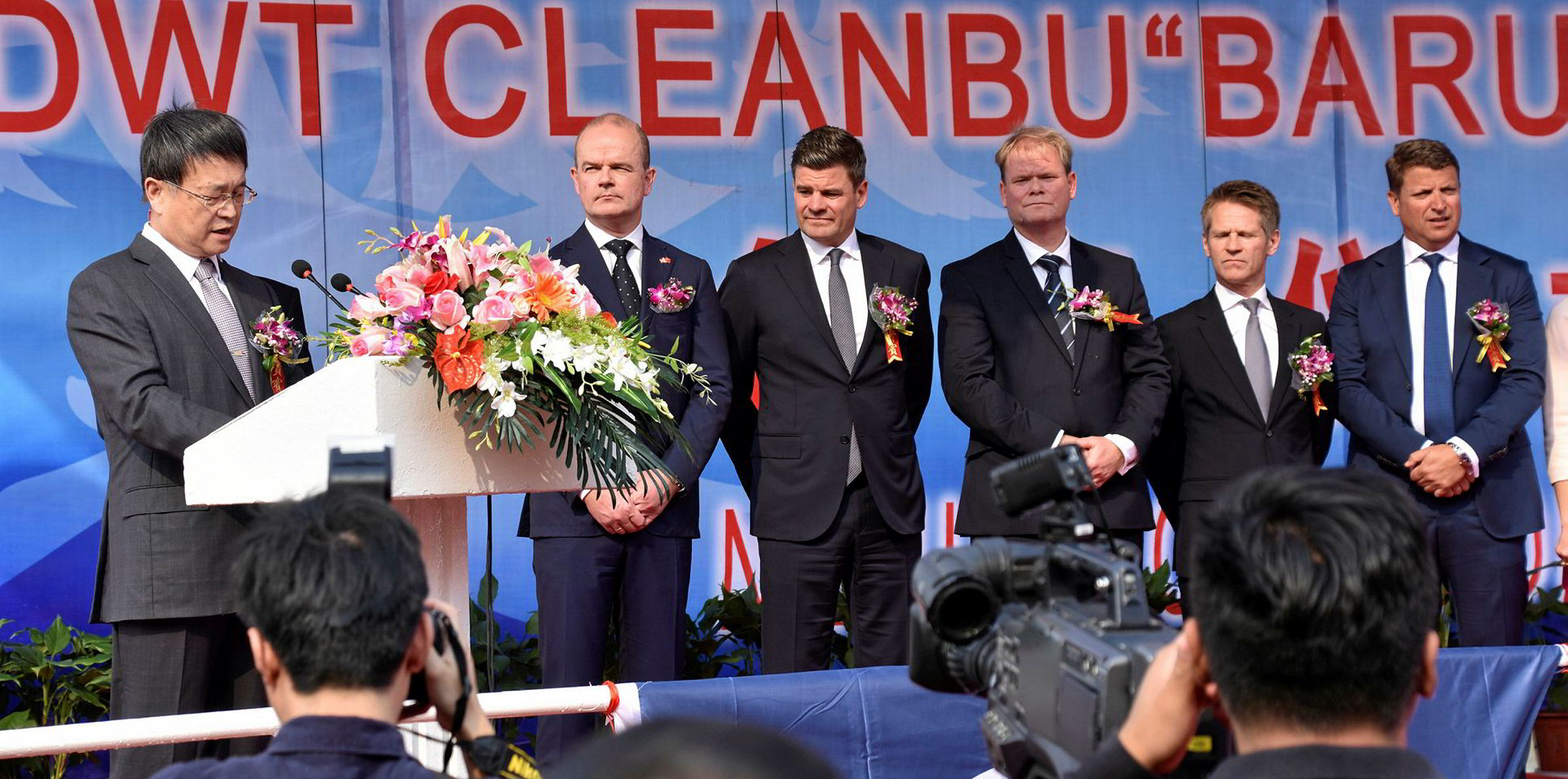
Like Klaveness' previous Cabu series, the new ships are designed to carry caustic soda in three out of their seven tank holds — a feature that allows the industrially orientated company to deliver caustic soda and load alumina without repositioning. The new vessels have been widened from the previous Cabu design, increasing the caustic soda-carrying capacity from about 56,000 metric tonnes to 61,000 metric tonnes.
Easy-cleaning design
The holds are designed for easy cleaning of dirty cargoes and to avoid damage while loading heavy dry cargoes, with no central bulkhead, no submerged pumps, and a corrugated lateral bulkhead with no internal stiffeners.
Klaveness — with its Bulkhandling bulker pool — has easy access to a full range of dry cargoes, and its aluminium industry connections give it special access to bauxite, alumina and caustic soda stems. But Klaveness' big bet with its Cleanbu series is that clean petroleum product cargo legs will enable it to slash ballast legs.
Jiangsu provincial dignitaries are no strangers to ship namings at Yangzijiang's docks, and last week's launch was graced by a number of Communist Party and government officials.
But the number of commissars might have been greater had plans worked out for a royal vessel naming during last week’s Norwegian state visit.
A busy programme for Norway's visiting Queen Sonja and King Harald V, including a meeting with Chinese President Xi Jinping in Beijing and a Norway-China Business Summit in Shanghai, made this impractical. So the royals dispatched Norwegian foreign minister Ine Marie Eriksen Soreide to cut the rope and smash the champagne bottle in their absence.
